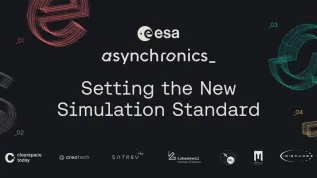
Laser device for scanning fruits and vegetables that detects diseases has been developed by researchers from the Institute of Agrophysics PAS in Lublin. In the future, with improvements, it could be used in orchards and sorting facilities.
"It is a device for non-destructive evaluation of various fruits and vegetables. This means that in order to check and assess their condition, fruits do not have to be destroyed: cut, grinded, or exposed to chemicals" - said Artur Zdunek, head of the Microstructures and Mechanics of Biomaterials Department at the Institute of Agrophysics PAS in Lublin.
Tested truit or vegetable is illuminated with laser light, and on the computer screen appears so-called speckle image, coming from the reflection of light - from both the fruit surface and its inner layers.
"Since the particles inside the plant cells are in motion, the image that we see on the screen also moves, resembling the +snow+ on TV. Based on the speed of the movement, we can assess the physiological state of the fruit, and various properties related to its quality, such as fungal infection, presence of dyes or degradation of these dyes" - explained Zdunek.
The scan allows to detect various disease processes and defects, such as bruising under the skin of the fruit, even at a stage when they are not visible to the naked eye.
According to Zdunek, scanning does not damage the fruit. "We have checked that the laser power we use does not heat up the surface. There is no change in the studied fruits" - he emphasised.
The research project of building fruit and vegetable laser scanner was funded by the National Centre for Research and Development, the cost was PLN 1 million 150 thousand.
Researchers from Lublin have built three prototypes that are being tested in laboratories. "Our device is intended primarily for laboratory testing, but we have ideas for its development" - said Zdunek.
He added that the researchers will try to raise funds for further research on the development of the device. The main objectives are miniaturization and improvement of the transmitted image of scanned fruit or vegetable, so that the device can be used, for example, in orchards and sorting lines.
"We expect that at first laboratories will use this method, then the device will be improved, become more convenient to use in sorting facilities" - said Zdunek.
PAP - Science and Scholarship in Poland
ren/ amac/ agt/ mrt/
tr. RL













